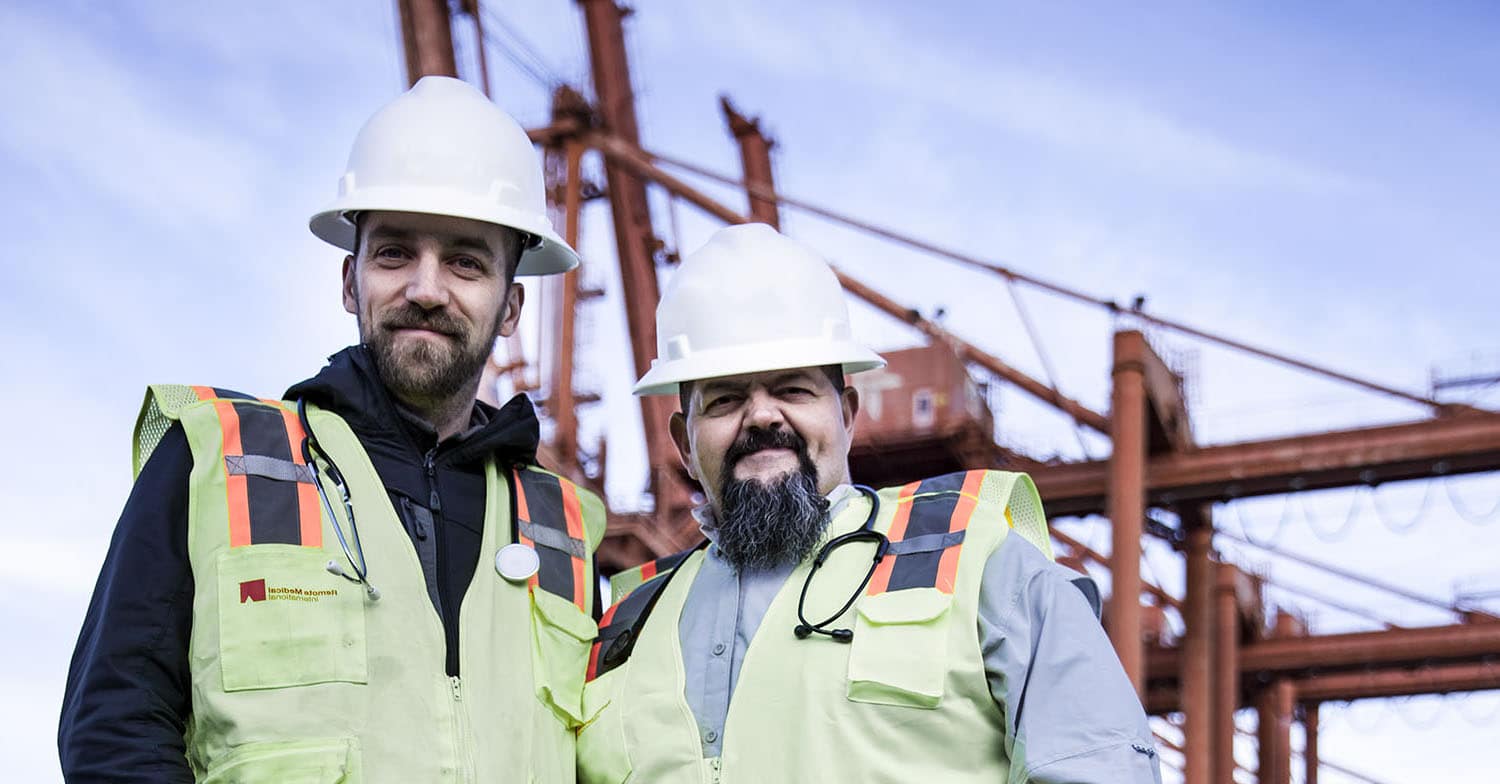With challenging terrains, quick trainings for independent workers, and long hours, pipeline construction is inherently challenging work. Since the projects are also in remote locations, medical services can be limited. Workers are therefore vulnerable to work-site injuries, especially if they are not used to the work or simply uneven, rocky terrain.Â
Having the right HSE professionals staffed for a pipeline project can help address many of these safety concerns and prevent injuries. We spoke with two of our field paramedics, Tony Shope and Robin Dudley, to see what they witness in the field and what they think safety managers can do to keep a lookout for these challenges.Â
ROLLOVER OF SHORT SERVICE EMPLOYEES
Pipeline construction projects operate on a tight schedule and budget, and require a lot of manpower in short notice. With high demand of work, and low supply of workers, employers rely on short service employees, or independent workers, to quickly fill jobs to meet deadlines. Due to quick training for the job, short service employees face the highest amount injuries.Â
“These projects move quickly and are often shorthanded,†said Shope. “Short service workers that come in have to learn their jobs on the fly, and there isn’t enough time or manpower for better training, which gets them into dangerous situations they don’t realize.â€
The equipment used on these projects can weigh upwards of tens of thousands of pounds, and pose a serious safety threat on the job when not properly manned. Combined with the remote and dangerous environments, short service employees are at high risk for injuring themselves, and potentially putting others in harm’s way.
Hand and eye injuries are common for short service employees since they typically handle welding, grinding, and setting up operations. Wearing the appropriate PPE can help prevent injuries for these employees.
TACKLING DANGEROUS TERRAINS AND CHALLENGING ENVIRONMENTS
Whether it’s in the dry, hot deserts of south Texas, or the cold, rainy mountains of West Virginia, pipeline construction projects have unique safety challenges on the job.Â
The terrains on pipeline projects are never consistent, and vary from location to location. This can include steep hills, unstable ground, muddy surfaces, and more. Planning and preparing for safety hazards can be difficult, and accessing injured patients is a challenge.Â
“Terrain and topography of the project site is the biggest challenge,†said Robin. “It can make it difficult to access patients, and potentially put even more lives at risk trying to treat them, especially when there isn’t always a vehicle on-site to pick up patients on the right of way.â€Â
In mountainous regions, workers build the pipeline on many steep inclines and it is extremely difficult to ensure the heavy equipment is properly secured on an 80 degree incline. If it is raining, the ground becomes slippery and uneven, leading to injuries caused by slips and falls. Cold weather and snow also create difficult and demanding working conditions, where frostbite can set in as fast as 30 minutes without proper clothing. Since certain articles of clothing, such as hoods, are not allowed to be worn on pipeline projects due to safety hazards, cold weather makes the day more dangerous.Â
Strains and sprains are extremely common for employees in remote locations, especially if they are moving from the flat lands to a more vertical, rugged terrain. Making sure new employees are educated on what equipment can help them with slopes or managing temperature changes can help prevent these injuries.
LOSS OF FOCUS
Pipeline workers are on the job for six to seven days a week, often for 12 hours each day. This puts a toll on the mind and body of workers. Towards the end of each project, workers can lose focus on important day-to-day safety measure while on the job, resulting in more safety hazards. Workers will often not maintain their health and basic hygiene because of the long hours. The flu, colds, and other diseases can also transmit more frequently amongst workers.Â
“Often times, during the last few weeks of work, complacency sets in and workers are not as focused and safe as they should be,” said Shope.
The end of the project can historically be the most dangerous time out in the field. Field medics therefore spend more effort patrolling the right-of-way, talking with workers, and checking in on their health more frequently to help workers stay on top of their health and safety.Â
With these unique safety challenges, it’s important to have experienced and trustworthy HSE professionals on-site. Not only can you improve the safety of your workforce, but also you can reduce unnecessary recordables. At Remote Medical International, our HSE professionals and medical providers know to look out for these injuries and make sure the health and safety of workers is taken care of with our safety and medical staffing services.
Want to learn more about how safety staffing can help your project? Contact us.


